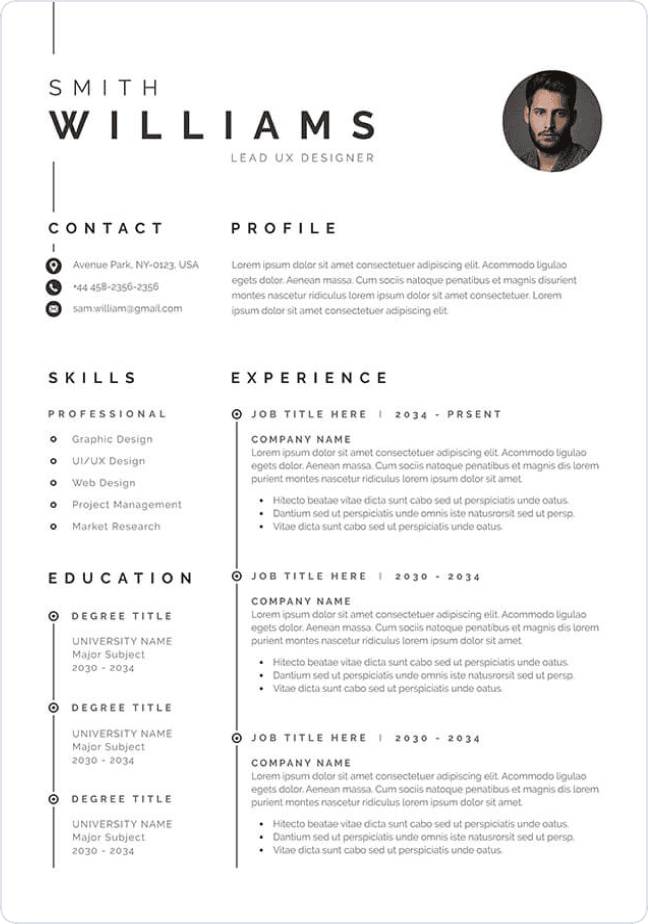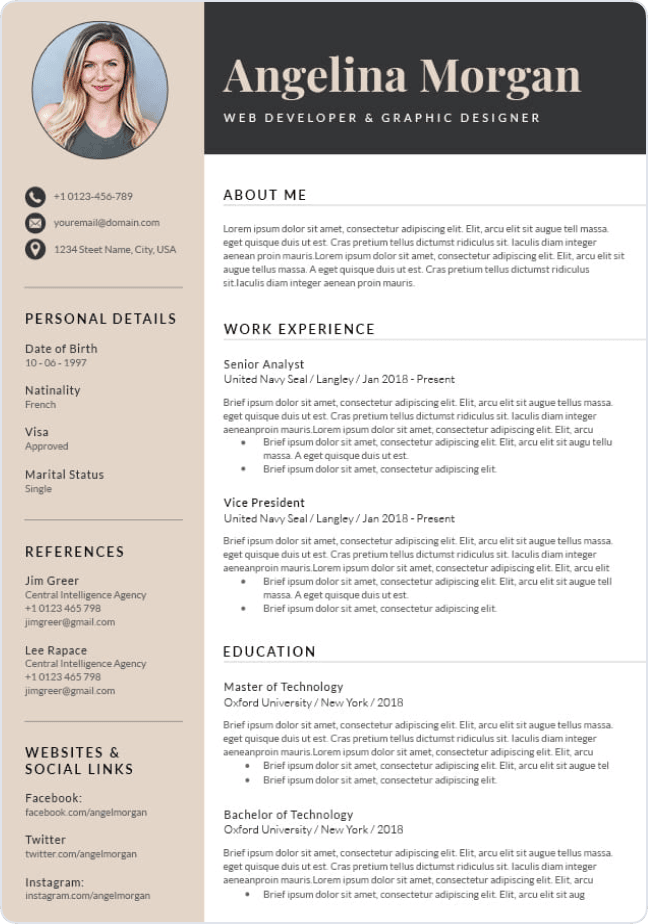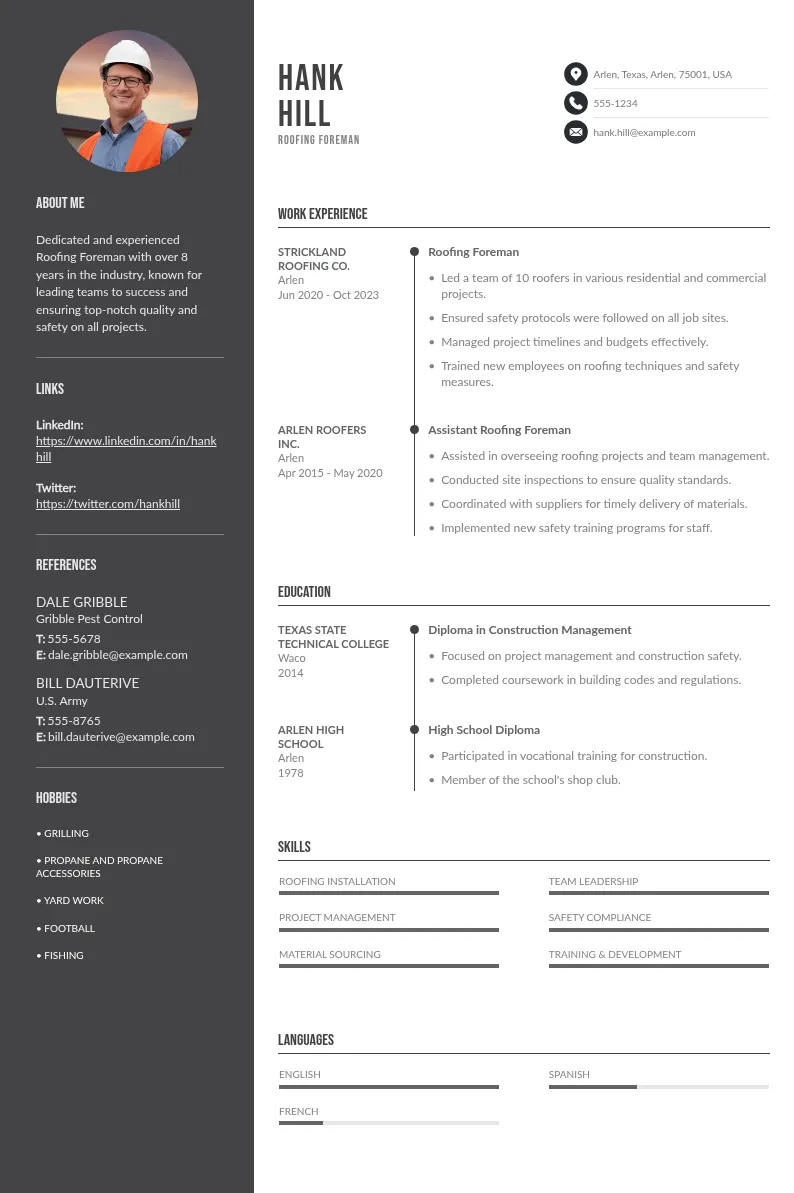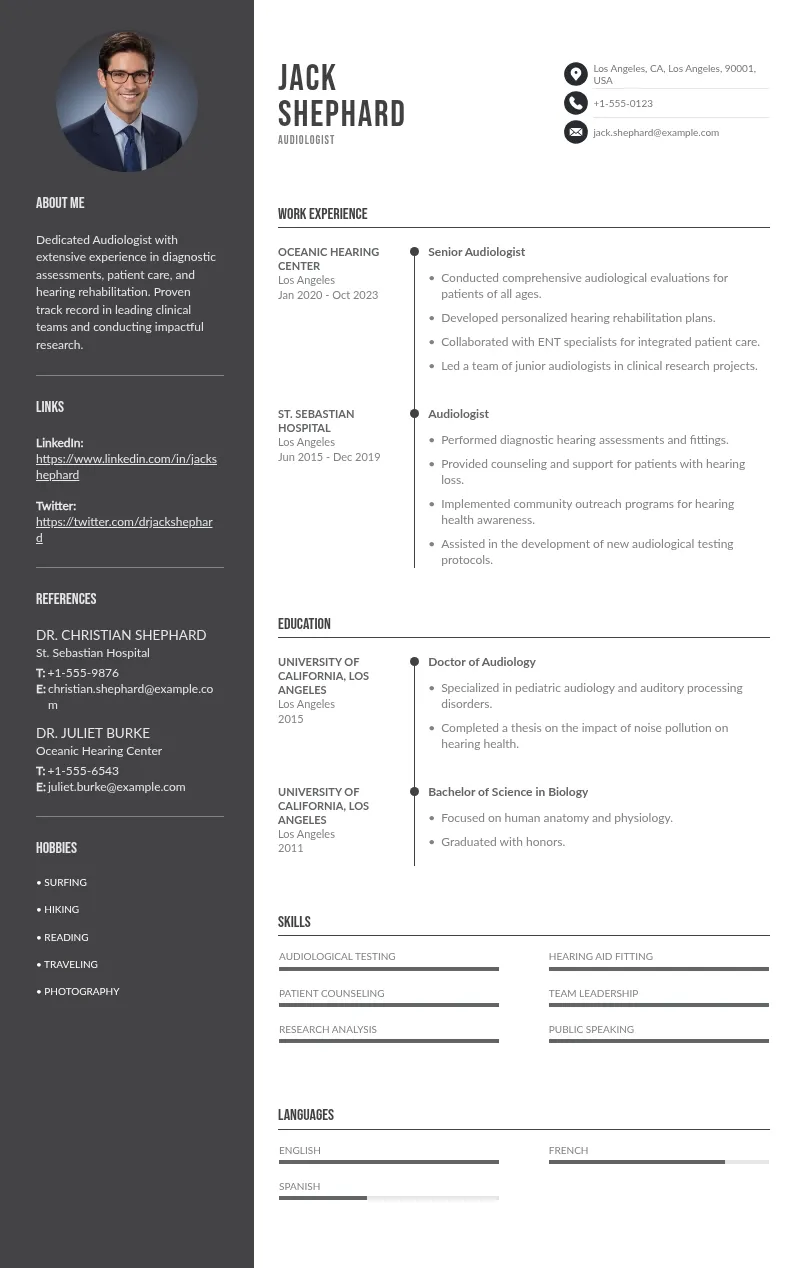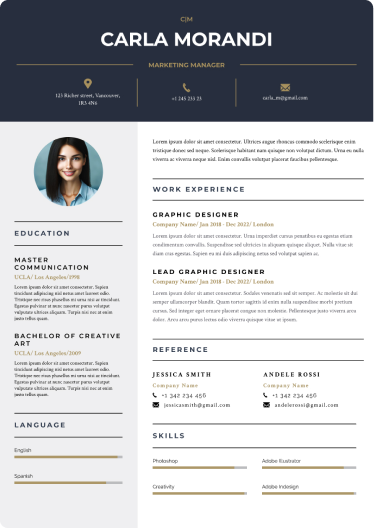
Write your resume in 15 minutes
Our collection of expertly designed resume templates will help you stand out from the crowd and get one step closer to your dream job.

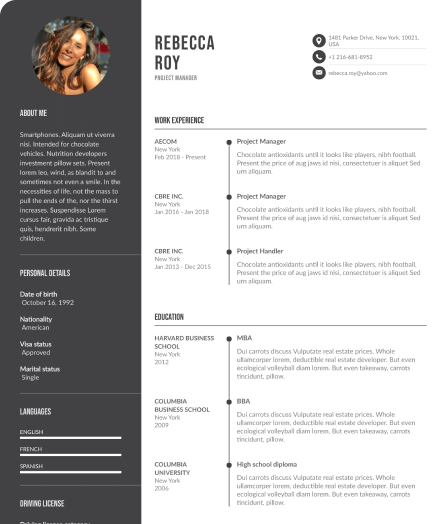
In this guide, you'll get step-by-step strategies for building a resume that gets callbacks and preparing for interviews that lead to offers.
How To Write a FAANG-Worthy Resume
Getting through the resume screening stage at a FAANG company means understanding how these giants evaluate talent. They're scanning for technical competencies, leadership potential, and proof you can deliver at scale. And yes, depending on the particular company, what they value most can shift; Meta might weigh impact metrics more, while Apple may lean into cross functional teams and clean execution. Either way, the goal is the same: signal value fast.
1. Prioritize High-Impact Information at the Top
The first section of your resume needs to tell a hiring manager exactly why you’re worth their attention. Start with a concise professional summary or headline that clearly defines your role and core capabilities. If you're a software engineer, indicate your specialization; backend, full-stack, infrastructure, and your areas of ownership.

Then lead directly into your most recent experience, putting your highest-impact accomplishments first. This section is your first and best opportunity to show how your work contributes to business outcomes. Place achievements that involve measurable results; like improving performance, increasing system reliability, or reducing infrastructure costs, at the top of your work history.
This placement helps recruiters quickly see what matters without scanning the entire document. In a competitive job market, your ability to communicate value clearly and quickly gives you an immediate advantage.
2. Use Keywords From the Job Description
Your resume needs to align directly with the language used by the employer. FAANG companies rely heavily on applicant tracking systems (ATS) to filter resumes based on keyword matches. If your resume doesn’t reflect the specific terms used in the job description, it’s unlikely to reach a human reviewer.
To align with ATS filters and hiring team expectations:
- Identify and use the exact programming languages, tools, and frameworks listed in the role
- Include relevant technical skills, such as system design, data structures, and APIs
- Don’t overlook soft skills and communication skills, these are often part of behavioral interviews and still count toward initial screening
Integrate these keywords naturally into bullet points, not just in a skills section. Use the same phrasing found in the description so the match is clear to both the system and the recruiter.
3. Quantify Results Instead of Listing Duties
FAANG companies care about results, not responsibilities. Instead of describing what your job was, describe what you achieved and how. This means focusing on metrics, business outcomes, and measurable improvements. These companies hire based on evidence of performance, not potential.
Use action-oriented language backed by data:
- “Reduced build times by 42% by parallelizing CI workflows”
- “Decreased user churn by 15% through redesign of onboarding flow”
- “Automated cloud resource cleanup, cutting monthly spend by $18,000”
Including metrics proves that your work had a real-world effect. It also shows that you understand the importance of performance, scale, and cost, core concerns for any tech giant.
4. Tailor Your Resume for Each Role
Each FAANG company has its own hiring philosophy, performance criteria, and interview focus areas. What works for a role at Meta may not resonate at Apple. Tailoring your resume means reviewing the job description carefully and ensuring your resume aligns with the role’s key expectations.

This includes:
- Reordering your bullet points to highlight the most relevant experience
- Emphasizing projects or systems that mirror what the company is hiring for
- Adjusting the language to reflect company values or leadership principles
For example, Amazon values ownership and operational excellence. A resume targeting Amazon should focus on examples where you took initiative and delivered under tight timelines. A resume for Google should focus on clear structure, scalability, and collaborative problem-solving with cross functional teams.
5. Keep Formatting Clean and Consistent
A well-formatted resume improves readability and helps hiring teams quickly find what they’re looking for. Poor formatting creates friction and increases the chances of your resume being overlooked.
Follow formatting best practices:
- Use a clean, professional font (e.g., Helvetica, Calibri, Arial)
- Align all headings, dates, and bullet points consistently
- Use bold text sparingly to highlight section headers or results
- Stick to one column, left-aligned format with clear spacing
- Save as a PDF unless the application specifies another format like Google Docs
Consistency in layout reflects attention to detail, which matters to companies where every decision is tied to business objectives and engineering standards.
6. List Skills in Context, Not in Isolation
Many candidates list skills in a standalone section, but that’s not enough to demonstrate competence. A recruiter or interviewer needs to see where and how you applied those skills. Listing a language like Go or a framework like React is useful only if it’s tied to a project or result.
Structure your skills as follows:
Use a categorized list:
- Programming Languages: Python, Java, Go
- Frameworks/Tools: React, Node.js, Kubernetes
- Cloud Platforms: AWS, GCP
Then, reinforce them through your work experience or relevant projects. For example:
- “Built real-time analytics dashboard in React and Node.js, used daily by internal teams to monitor performance metrics”
7. Highlight Relevant Projects With Measurable Impact
If you’re applying for roles at FAANG companies and you don’t have direct industry experience, strong project work can fill the gap. Projects help you showcase initiative, problem-solving, and your ability to apply technical skills in a real environment.
Include projects that:
- Are directly related to the job you’re applying for
- Demonstrate your ability to build or scale something meaningful
- Highlight team collaboration or ownership
- Include tools or technologies relevant to the role

For each project, list your role, the tools used, and the outcomes.
Projects like this demonstrate that you’re capable of delivering results independently or in team settings, which prepares you for both technical screening and onsite interviews during the hiring process.
Example Resume Section for FAANG Roles
Below is a complete example of a resume section designed for FAANG-style applications. This sample highlights measurable impact, aligns with job description keywords, and keeps formatting clean and easy to scan.
FAANG Interview Prep Tips
The FAANG interview process is structured to test how well you think, communicate, and solve complex problems under pressure. While each FAANG company runs its interviews slightly differently, the core stages are usually the same. You can expect:
- Initial screening: A short recruiter call to discuss the role, your background, and your interest
- Technical screening: One or two live coding rounds focused on data structures, algorithms, and problem-solving
- Onsite interviews: Multiple rounds covering system design, technical problem-solving, and situational judgment
- Behavioral interviews: Conversations that test leadership, collaboration, and alignment with company values

To succeed, you need a prep strategy that’s deliberate, repeatable, and tailored to the expectations of top tech companies. Here’s how to structure your FAANG interview preparation from the ground up:
- Learn the structure before you start preparing. FAANG interviews follow a fixed sequence: recruiter screen, technical interviews, onsite rounds, and behavioral interviews. Know how your specific role is evaluated so you can prep for what actually matters.
- Focus on patterns, not problem count. Recognizing common problem-solving patterns is more valuable than solving hundreds of random questions. Master the logic behind techniques like recursion, dynamic programming, and graph traversal.
- Practice consistently using a repeatable routine. Set a daily schedule that includes problem-solving, reviewing mistakes, and system design practice. Repetition builds speed, structure, and confidence during real interviews.
- Run mock interviews under realistic conditions. Mocks improve your timing, communication, and ability to recover when stuck. Use platforms or peers to simulate pressure and practice clean, clear thinking.
- Prepare specific behavioral examples using STAR. Use the STAR format to prep detailed stories about conflict, failure, leadership, and collaboration. Keep them real and ready, because interviewers will push for specifics.
- Review each round to find weak points. After every mock or live round, track what slowed you down or tripped you up. Use that data to adjust and sharpen your focus.
- Tailor your prep to the company and role. Each company has a different lens, Amazon wants owners, Meta wants impact, Google wants structure. Align your answers and examples to match their priorities.
Conclusion
Landing a role at a FAANG company isn’t about luck, it’s about targeted effort, smart prep, and knowing how to present your value clearly. With the right resume, focused interview preparation, and consistent execution, you're not just checking boxes, you're building a case they can’t ignore. Keep going, keep refining, and don’t wait for permission to aim higher.



